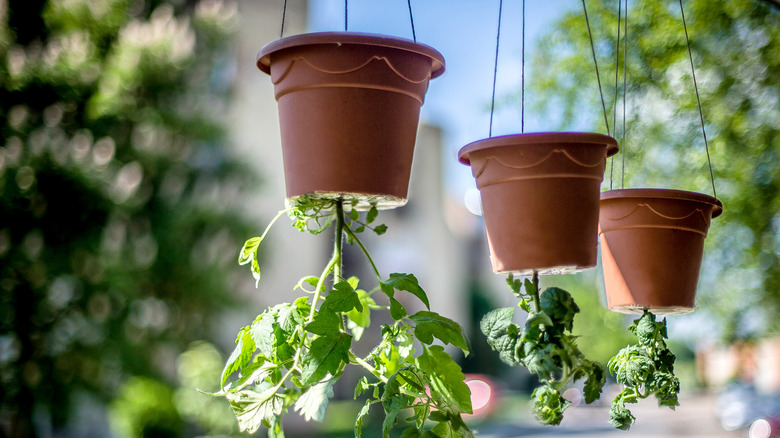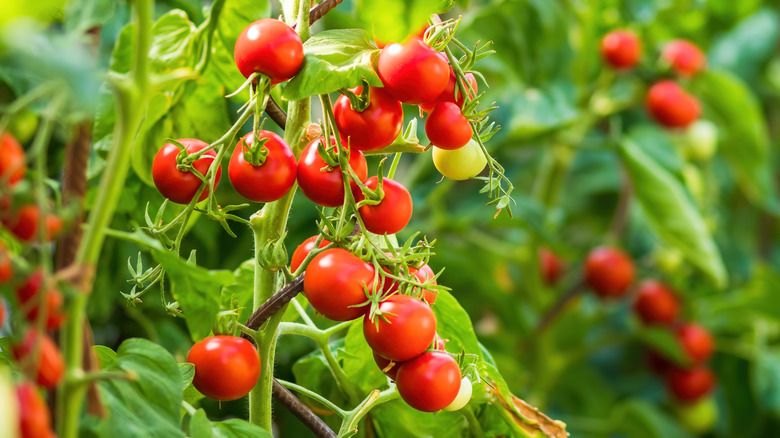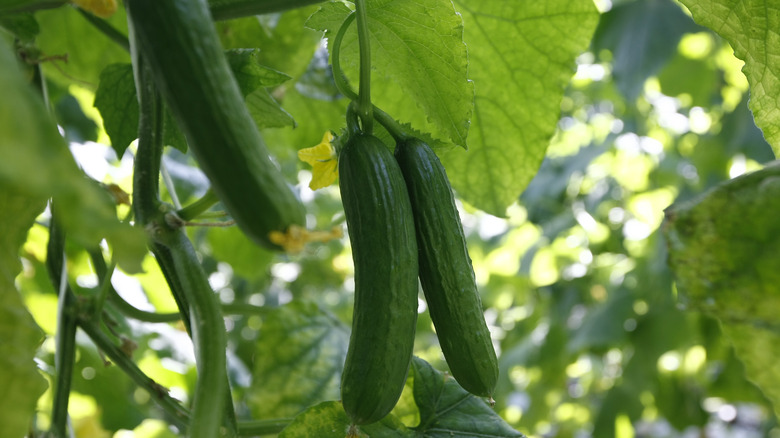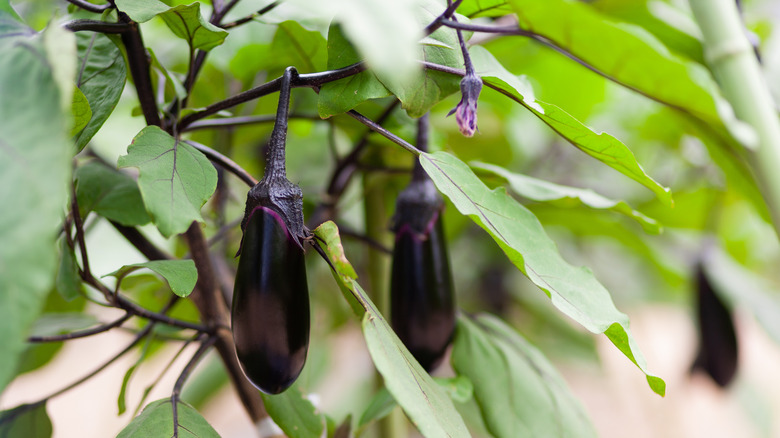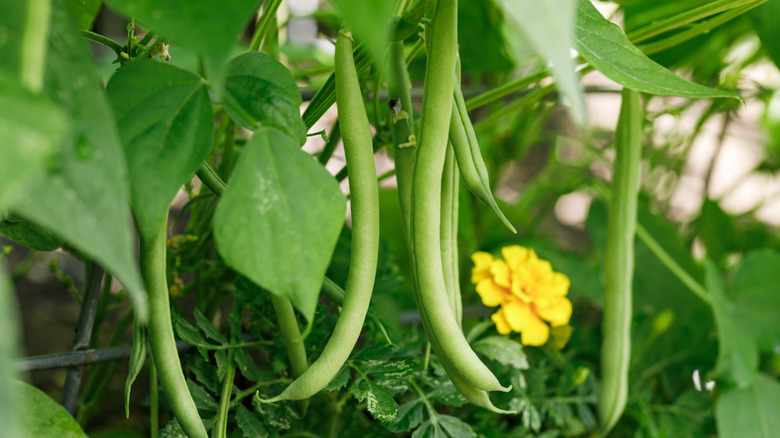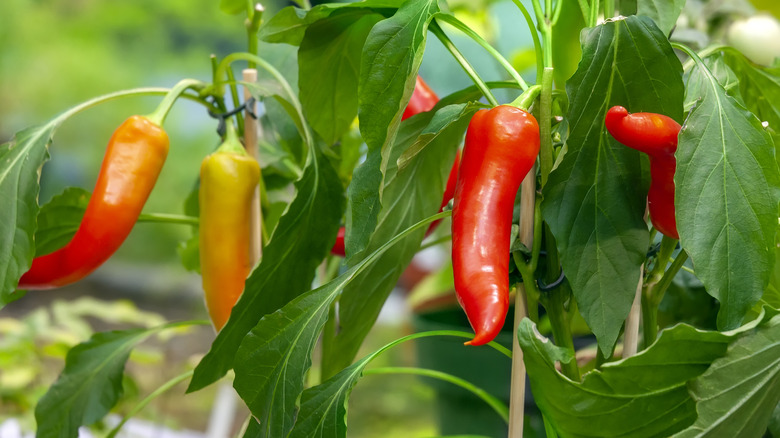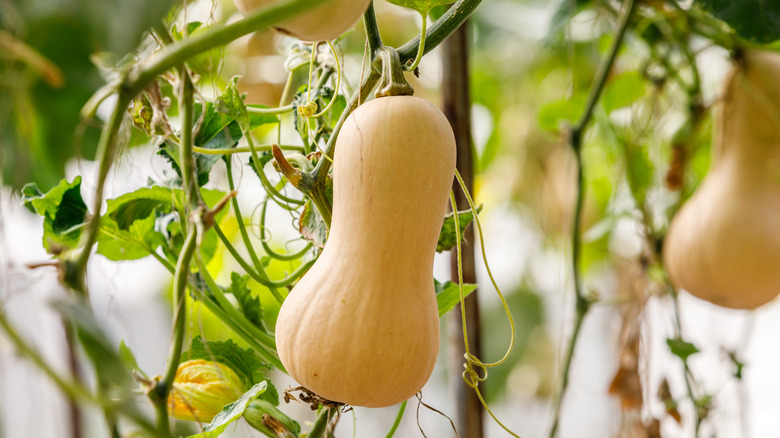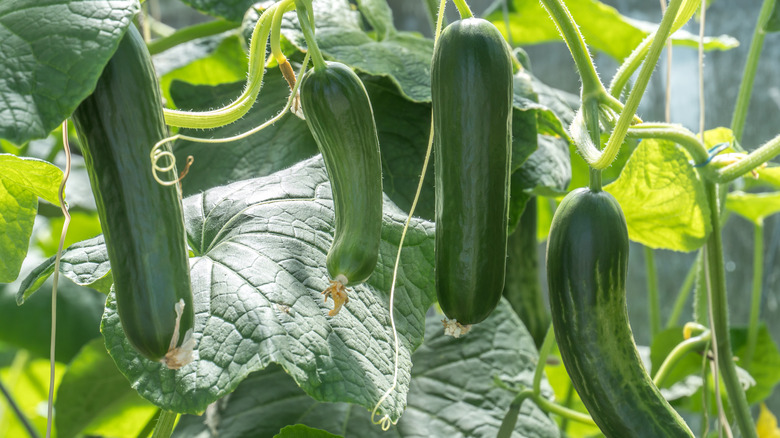The Best Vegetables To Grow In Your Upside-Down Garden
The trend of upside-down gardens has been on the rise in recent years, as this method is not only unique but comes with some great benefits. Inverted gardens use hanging flower pots with a hole in the center of the base to plant greens face down. Instead of roots diving deeper into the ground, they point toward the sky. It's an unconventional way of gardening, but several vegetables thrive in this matter from legumes to gourds, and we've listed seven of the best options to plant upside down below.
Inverted growing is a great way to create a vegetable garden in a small space. You can have fresh produce even if your yard is concrete from fence to fence or if you don't have a backyard at all, since you can plant an upside-down garden on your balcony or rooftop. Plus, you don't need trellises or stakes for your inverted garden. Even better, the elevated pots limit fungus, pests, and weeds from attacking your vegetables. You can also plant an herb or flower right side up at the top of your planter while the vegetable sprouts below to save even more space.
1. Tomatoes
Tomatoes (Solanum lycopersicum) are a popular plant for upside-down gardening. Small varieties like grape or cherry tomatoes are the most successful for this planting style, as types with large fruits can weigh stems down and cause them to break. You'll want to hang your tomato plant in a bright area, preferably one with eight hours of direct sunlight. They will also need 1 inch of water weekly. However, upside-down planters tend to dry out quickly, so give your plant a drink any time the top inch of soil is dry.
2. Cucumbers
Mini cucumbers (Cucumis sativus), which are perfect for pickling or snacking, grow great in inverted gardens. Large varieties can work as well, but you'll have to harvest them while they are still small to avoid damaging the plant. Cucumbers grow best in full sun and lots of water. Plant them in an area with six to eight hours of direct sunlight and always keep the soil moist. You can add mulch to the top of the container to help lock in water as well.
3. Eggplant
Eggplants (Solanum melongena) are one of the sun-hungry vegetables that can handle high heat and upside-down growing. Asian or specialty varieties like Japanese eggplant are thin and elongated, which may fare better in an inverted garden than common rounded varieties. These plants prefer full sun and nutrient-rich soil. At least six hours of sunlight will do, but up to 10 hours is ideal. The soil should be mixed with fertilizer or compost, evenly-watered, and kept moist while the fruit develops.
4. Beans
Pole and bush beans (Phaseolus vulgaris) are another hearty plant that you could grow in your hanging garden. They thrive best in full sun but will persevere in partial shade, though they'll produce fewer beans in these conditions. Well-drained soil is key for a healthy plant, which gravity will take care of for you in this gardening style. Give your crops 1 inch of water weekly and ensure the soil stays moist. Typically, bean plants require a stake or trellis, but you can forgo this accessory with upside-down growing.
5. Peppers
There are several kinds of peppers (Capsicum spp.), from spicy to sweet, and any variety of this veggie can thrive in your upside-down garden. You'll need to hang your peppers somewhere with full sun, ensuring that they get up to eight hours of direct light. Nutrient-rich soil is best for your plant, but peppers can thrive without fertilizer or compost. When it comes to watering, 1 to 2 inches a week will suffice. You can add mulch to increase water retention but only apply the layer to warm soil to avoid freezing roots.
6. Winter squash
Winter squash (Cucurbita moschata), like pumpkin or butternut squash, doesn't mind the topsy-turvy gardening, but it is important to stick to small varieties like buttercup or sweet dumpling, as you don't want a 20-pound pumpkin falling from your terris. For your squash to thrive, up to 10 hours of direct sunlight is preferred, but six hours will do. An inch of water weekly will keep your crops alive, but your vegetables may require more, given hanging planters retain less water than soil in the ground.
7. Zucchini
Zucchini (Cucurbita pepo) is a type of summer squash that can also be grown upside down. It's perfect for baking, cooking, and eating raw, and even its flowers are edible. For the best produce, grow your zucchini in nutrient-rich and well-drained soil. These vegetables love water, so keeping the soil moist is a must. They also need full sun and warm weather to thrive. You may also have luck growing other summer squash varieties like straightneck, crookneck, or patty pan in your upside-down garden as well.

